- Home
- Bill Bryson
The Best American Travel Writing 2016 Page 2
The Best American Travel Writing 2016 Read online
Page 2
I had never heard of Eilean Mòr or its missing lighthouse-keepers, but as soon as I came across the story I wanted to go there at once to see it for myself. If you like to travel—and I’m supposing you do or you wouldn’t be reading this book—you will no doubt recognize that impulse. It seems to me an entirely natural and even admirable instinct, but it must be admitted that it sometimes has an element of irrationality about it, too—not least when it comes to wanting to visit the outermost of the Outer Hebrides.
Getting to Eilean Mòr is not an easy thing to do. From my home in southern England, it would take two plane flights (or a long train journey, car drive, and ferry crossing) just to reach Stornoway on the Isle of Lewis. Then there would be a 40-mile drive to the coastal village of Uig, and finally a crossing of perilous seas in a small boat, weather permitting.
There is very little to see when you get to Eilean Mòr other than colonies of perturbed seabirds. The lighthouse still stands, but it has been automated since 1971, so there are no keepers in residence and the building isn’t open to the public. Eilean Mòr itself is just 40 acres of barren rock, and can be toured in an hour. So there really isn’t anything very tangible to be gained from a visit. Even so, I would very much like to go, just to see it with my own eyes. That’s the thing about travel, it seems to me. It is many attractive things—enriching, stimulating, seductive, pleasurable—but very often a touch compulsive, too.
My reason for poking about in the London Library’s extensive travel section was that I was trying to answer the question that this essay naturally poses, namely: Why do I travel? Why do any of us travel? I wasn’t at all sure I knew the answer. Now, after nearly two weeks buried away in the library’s musty sprawl of travel narratives, histories, and sociological inquiries, I cannot say that I am a whole lot the wiser. But I do know rather more than I did about the thoughts, ambitions, and prejudices of travelers over the last 150 years or so.
In looking through books on the art and science of travel, certain recurrent themes—three in particular, all of them at least slightly off-beam, in my view—leap out. The first and most dominant is the enduring conviction that travel isn’t what it used to be. Every generation makes this observation afresh. Evelyn Waugh announced the death of travel as a worthwhile pastime 70 years ago in When the Going Was Good (a title that is in itself telling, of course), and there is hardly a travel writer of note in our own era who hasn’t at some point made a similar declaration. The idea that travel has somehow diminished in the author’s own lifetime actually goes back at least as far as 1726, when Jonathan Swift has Gulliver declare wearily in Gulliver’s Travels, “I thought we were already overstocked with books of travels.”
Much as I hate to support a cliché, there is something in the argument in at least some respects. It is certainly true to say that there have never been so many tourists in the world as there are today, and their sheer numbers make many experiences a challenge. Not long ago I walked past the Anne Frank Museum in Amsterdam on a Sunday morning in March two hours before it opened, and there was already a long line forming at the door. In 2015 the Anne Frank Museum took in 1,268,095 visitors. That’s about the same number as go to Bryce Canyon National Park in Utah every year, but with the obvious difference that Bryce Canyon occupies tens of thousands of acres of wilderness while the Anne Frank Museum occupies one smallish building on a quiet street in Amsterdam.
When I went to the Anne Frank Museum for the first time in 1972, I walked straight in on a summer’s afternoon. I did have to wait a few minutes to gain admission to the secret annex where Anne and seven others hid from the Nazis for two years, and I clearly remember the woman at the door apologizing for the delay. Neither of us had any idea then that we were living in a kind of golden age. (I should note that in the spring of 2016 the Anne Frank Museum instituted a policy of advance-purchase tickets with timed entry, something that is bound to become more common all over as tourist numbers relentlessly grow.)
In similar manner, a year or so ago, on a bitterly cold February day—about as out of season as you could get—I fetched up at the Louvre in Paris, looking for a little cultural diversion (and ideally a little warmth, too) only to find a long and more or less stationary line of people stretching from the back of the Louvre courtyard to a distant ticket desk. I tutted and felt aggrieved, but of course I was being a hypocrite. You can’t reasonably complain about what others are doing if you are trying to do it yourself.
If you do find an attraction thronged with visitors, there is always a simple solution: go somewhere else. I went across the river to the much quieter Musée d’Orsay and had an excellent time. The central feature of modern travel, it seems to me, isn’t that there are too many tourists in too many places, but rather that there are too many tourists in just a few places—quite a different matter. The world is a long way away from being ruined for travel. You have only to look at many of the pieces in this anthology—and in this regard I would mention Paul Theroux in Alabama and Dave Eggers in Hollister, California, just for starters—to realize that you don’t have to seek out exotic locales or go to terribly great lengths to have memorable and touristically solitary experiences.
A second enduring assumption of travel writing is that the world has become dispiritingly homogenized and isn’t nearly as interesting as it used to be. I remember once being told by a National Geographic photographer that there is no point, in any city in the world, of going to the topmost floors of a skyscraper and taking a panoramic shot. “All cities look the same now,” he explained. “It doesn’t matter whether it’s São Paulo, Johannesburg, Toronto, anywhere. The picture editors will never select that picture because it just looks like everywhere else.”
I am old enough to recall a Europe in which each nation was a cultural oasis largely untouched by the outside world. Every country had its own cars, movies, restaurants, and stores, just as it had its own architecture, history, and language. When I arrived in Europe in the early 1970s there wasn’t a single McDonald’s on the continent; today there are nearly 7,500 of them. It was a world without ATMs and, except for the exceptionally rich and worldly, credit cards. The rest of us carried cash or traveler’s checks. Hardly anyone outside of the Low Countries and Scandinavia reliably spoke English. Menus were almost always exclusively in the native language, so you were seldom entirely sure what you had just ordered.
If you wanted to know how things were back home, you had to have your folks write to you care of an American Express office in some exotic foreign capital, or to a post office with a poste restante service. In either case, you could expect to spend a morning standing in a long line just to learn that your cousin was pregnant and Mrs. Miller’s dog had died. International phone calls were much too expensive to contemplate. The Internet of course didn’t exist. To catch up with world affairs, you had to buy the International Herald Tribune, a costly investment but a good one because it not only gave you the baseball scores and news of American affairs, but announced you as quite a cosmopolitan fellow as you sat perusing it at a Parisian café or Venetian square.
The International Herald Tribune ceased publication in 2013. It lives on, in a kind of ghostly manner, as the International New York Times, but nobody really needs it. These days you can get all the latest news on your telephone or tablet. It is possible, indeed quite easy, to sit at a sidewalk café in Paris and forget that you are in Paris. No doubt it is a reflection of my age, but the world seems full of people with sound systems in their ears and screens in their hands who want to be anywhere but where they actually are, which seems a rather strange and depressing ambition to me. I quite like being in the world, with its noise and commotion and random distractions. One of the more resounding benefits of travel writing, I would venture, is that it reminds us just how multifariously interesting that world can be.
Which brings us to the third widespread belief of the genre, namely that travel writing is something of a doomed art. I have an old friend named John Flinn, who until his retirem
ent was the travel editor of the San Francisco Chronicle. Until fairly recent times, the Chronicle travel section, like most Sunday travel sections, was a thing of some heft and substance. In John’s day, it generally ran between 24 and 28 pages. Now it is never more than 6 and sometimes as few as 4.
“I usually ran eight feature articles a week of about fifteen hundred words each,” John told me. “Now there are never more than two. Most papers just run wire copy these days. Hardly any commissioned travel articles. There are plenty of blogs you can write for, but getting paid to write travel pieces is a real challenge.”
Travel magazines are often not much better. “Narrative travel writing seems to be disappearing from them. Now their bread and butter is lists of ‘Ten Great Boutique Hotels’ or ‘Twenty Great Roller Coasters’ and that sort of thing.”
So it can all seem a little depressing. And yet, as the pages that follow sumptuously demonstrate, some awfully good writers are still managing to travel and get their words into print. God bless those outlets that enable them do so.
None of this, I realize, brings me a whole lot closer to answering the question I began with. To wit, what is it about travel that is so beguiling? But then I am not sure that it is a question that can be simply or satisfactorily answered. The one group of people who have addressed that question at length and in depth is academics, but alas, and to be cruelly candid, there is not a group of people on earth more densely incoherent than those who write academic texts. Here is a genuine (and genuinely typical) sentence, explaining (I think) motivation in travel writing from a book called Travellers’ Tales of Wonder published by the University of Edinburgh Press in Scotland: “Self-reflexivity, the foregrounded consciousness of the partiality and perspectivity of the account, has its complement in the foregrounding of cultural memory. At its most fundamental poetelogical level, the narrative of a journey evokes an extraordinarily rich and varied cultural history.” Or here is a wisp of thought on the nature of travel writing from Tourists with Typewriters, published by the University of Michigan Press: “Travel literature is a polyvalent genre that alternates between ‘a semi-ethnographic, distanced, analytic mode’ and ‘an autobiographical, emotionally tangled mode.’”
I can’t argue with any of that, mostly because I can’t understand any of it. I have to say that for me it is all much simpler than that. I travel because it brings me pleasure to do so. I especially love that sense of not knowing quite what is going on, of being in a place where mundane things—an advertisement at a bus shelter, a snack from a street stall, the giant insect that lands on your shirtsleeve and preens its luminous wings—become fascinating, alarming, delightful, amusing, or otherwise notable. Henry James put it very well more than a century ago when he wrote: “I can wish the traveler no better fortune than to stroll forth in the early evening with as large a reserve of ignorance as my own.” I entirely understand the feeling.
Some years ago the London Times sent me to Japan during the soccer World Cup to write about the spectacle of the world’s greatest tournament from an outsider’s perspective, as someone who doesn’t follow soccer very closely. All I was expected to do was wander around and enjoy myself. I found I loved Japan, largely because I was never quite sure what was going on. I couldn’t read the signs. I couldn’t figure out the food. I couldn’t converse with anyone. I couldn’t even confidently operate the high-tech toilet in my hotel room. It was wonderful.
On my next-to-last day in the country, I flew into Tokyo from Sapporo and needed to get to Tokyo’s main railroad station, called Shinjuku. I climbed into a taxi at the airport and said to the driver, “Shinjuku station, please.”
He didn’t seem to have any idea what I meant. I repeated my request, as articulately as I could, and he looked at me as if I had asked him to take me to Boise. I pulled a map of Tokyo out and showed him Shinjuku station. He studied this with a look of great dissatisfaction, but at length put the car in gear and we set off.
We drove for what seemed hours through the endless, numbing sprawl of Tokyo. Eventually we entered a long, deep tunnel—a kind of underground freeway, it seemed. About a mile along, the driver pulled into an emergency parking bay and stopped. He pointed to a metal door cut into the tunnel wall and indicated that I should get out and go through that door.
“You want me to go through that door?” I said in disbelief.
He nodded robustly and presented me with a bill for about a zillion yen. Everything was beginning to seem more than a touch surreal. He took my money, gave me several small bills in change, and encouraged me to depart, with a little shooing gesture. This was crazy. We were in a tunnel, for crying out loud. If I got out and he drove off, I would be hundreds of feet under Tokyo in a busy traffic tunnel with no sidewalk or other escape. You’ll understand when I say this didn’t feel entirely right.
“Through that door there?” I said again, dubiously.
He nodded and made another shooing gesture.
I got out with my suitcase and went up three metal steps to the door and turned the handle. The door opened. I looked back at the driver. He nodded in encouragement. Ahead of me, lit with what seemed emergency lighting, was the longest flight of stairs I had ever seen. It took a very long while to climb them all. At the top I came to another door, exactly like the one at the bottom. I turned the handle and cautiously opened it, then stepped out onto the concourse of the world’s busiest railway station.
I don’t know whether this is the way lots of people get to Shinjuku or whether I am the only person in history ever to have done so. But what I do know is this: it’s why I like to travel.
Bill Bryson
MICHAEL CHABON
White Guy in a Djellaba
FROM Bon Appétit
We were heading down to Fes from blue Chefchaouen and making decent time when our driver left the autoroute for a stretch of doubtful road. A modest sign pointed, in French and Arabic, to some unknown town.
I considered asking Rida, our minivan driver, about the reason for the change of route. I worked out the sentence in French in my head. But then I let it pass. Rida was a professional, and it was his country. In any case, I knew from long experience of travel in foreign countries and tongues that explanations, like dreams, only make sense while they’re happening. Answers I thought I had understood perfectly when I heard them in French fell apart as readily as dreams when I translated them for my wife. At that moment I felt that I would rather not know the reason for the detour than know that I didn’t know it.
Nothing moves me more profoundly, I hasten to add, than discovering the extent of my own ignorance. That is why I travel—by nature I’m a homebody—but sometimes it can be hard. Some days you get tired of decoding, of interpreting, of working to understand, of constantly orienting yourself, or, to put it another way, of being constantly lost.
“Why did you turn off the road?” my wife asked.
I looked back at Ayelet. She had a child on either side of her—“the Bigs,” Sophie and Zeke, aged 20 and 17. In the back row were “the Littles,” Rosie and Abe, 13 and 11. The boys had their headphones on, and the landscape unspooled past them to a hip-hop soundtrack; Action Bronson and Flatbush Zombies among the olive groves.
“Better to go this way today,” Rida said. He seemed inclined to leave it at that.
“Is this the way to Volubilis?” Ayelet asked.
“No,” Rida said, “the way to Zegota.” Rida was handsome and soft-spoken. As with many men who have soft voices and serious eyes, it was hard to tell if he was fucking with you. I thought I saw a smile gathering momentarily on his face, but it went away. “After Zegota, Volubilis.”
“Zegota,” Ayelet repeated, checking with me to see if I’d heard of it. I shook my head.
“Can we get lunch there?” Rosie asked.
“Not couscous,” Abe said.
We all jumped on Abe for being so rude as to disparage Rida’s national dish, but we were a bunch of dirty hypocrites. Everyone was sick to death of cousc
ous. Moroccan cuisine is delicious and comforting, but it lacks fire and, above all, breadth. The spicy harissa I had enjoyed with my couscous in Belleville and the Goutte d’Or in Paris turned out to be a Tunisian thing; in Morocco you had to ask for it, catching your hosts off-guard, at times causing mild consternation. At nearly every meal in Morocco, the tourist is presented with subtle variations on four main courses: meat and/or vegetable couscous, meat and/or vegetable tagine, meat or fish skewers, and b’steeya, a savory-sweet pie of pigeon or chicken. Before arriving and during the first few days, the prospect of endless couscous and b’steeya had seemed heavenly. But 10 days out from California, I found myself tormented by taqueria longings.
“Not couscous,” Rida said. Now he smiled outright.
The country here was flat and, like so much of Morocco, under heavy cultivation with olives. In the clear late-December light, the silver leaves of the olive trees gave the day a wintry glint. Spreading plants with lush leaves grew among the endless ranks of oliviers. Rida said these were tobacco plants.
“Before, they grow the hashish here,” he said. “Very good hashish. The best.”
I saw that he expected this American whom fate had placed in the front seat of his employer’s second-best minivan, dressed in a knitted wool taqiyah, or skullcap, and a hooded djellaba over an Illmatic T-shirt, to take an interest in the subject of hashish.
“Interesting,” I said, trying to sound uninterested.
“Yes, but it is finished. The government says it will be better to grow the tobacco.”
From a public health perspective, the underlying premise of this policy struck me as grievously flawed, but there was nothing much Rida or I could do about it. So I let it pass.

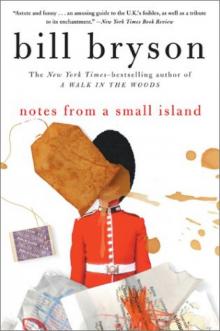 Notes from a Small Island
Notes from a Small Island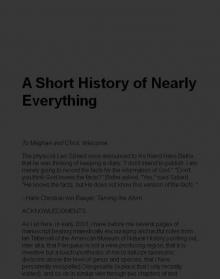 A Short History of Nearly Everything
A Short History of Nearly Everything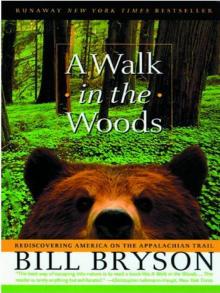 A Walk in the Woods
A Walk in the Woods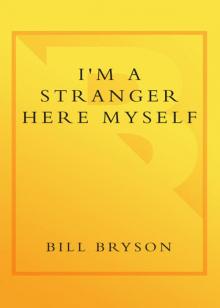 I'm a Stranger Here Myself
I'm a Stranger Here Myself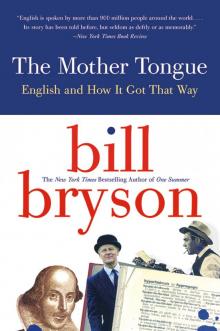 The Mother Tongue
The Mother Tongue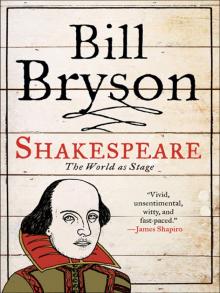 Shakespeare
Shakespeare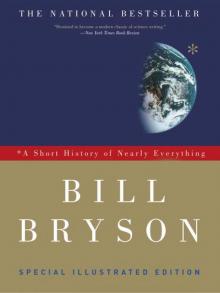 A Short History of Nearly Everything: Special Illustrated Edition
A Short History of Nearly Everything: Special Illustrated Edition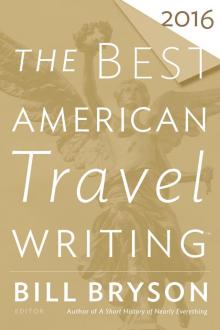 The Best American Travel Writing 2016
The Best American Travel Writing 2016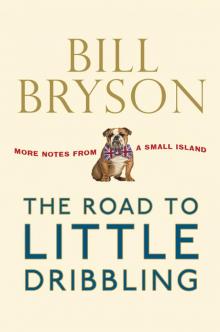 The Road to Little Dribbling
The Road to Little Dribbling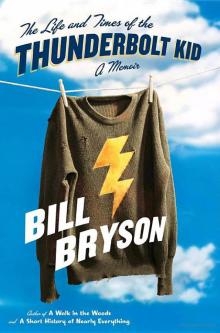 The Life And Times Of The Thunderbolt Kid: A Memoir (v5.0)
The Life And Times Of The Thunderbolt Kid: A Memoir (v5.0) Made In America
Made In America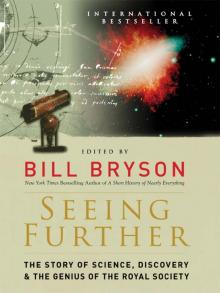 Seeing Further
Seeing Further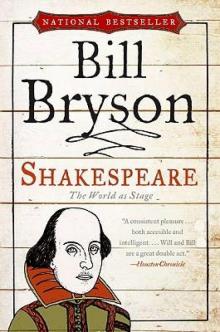 Shakespeare: The World as Stage
Shakespeare: The World as Stage The Life and Times of the Thunderbolt Kid
The Life and Times of the Thunderbolt Kid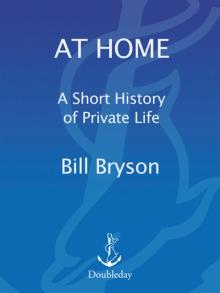 At Home
At Home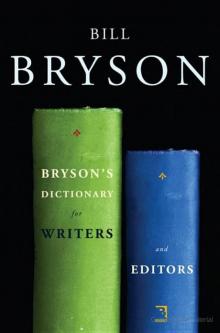 Bryson's Dictionary For Writers And Editors (v5.0)
Bryson's Dictionary For Writers And Editors (v5.0) Neither Here Nor There
Neither Here Nor There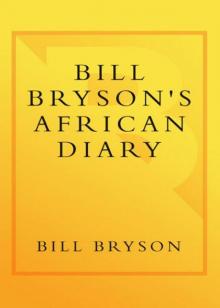 Bill Bryson's African Diary
Bill Bryson's African Diary